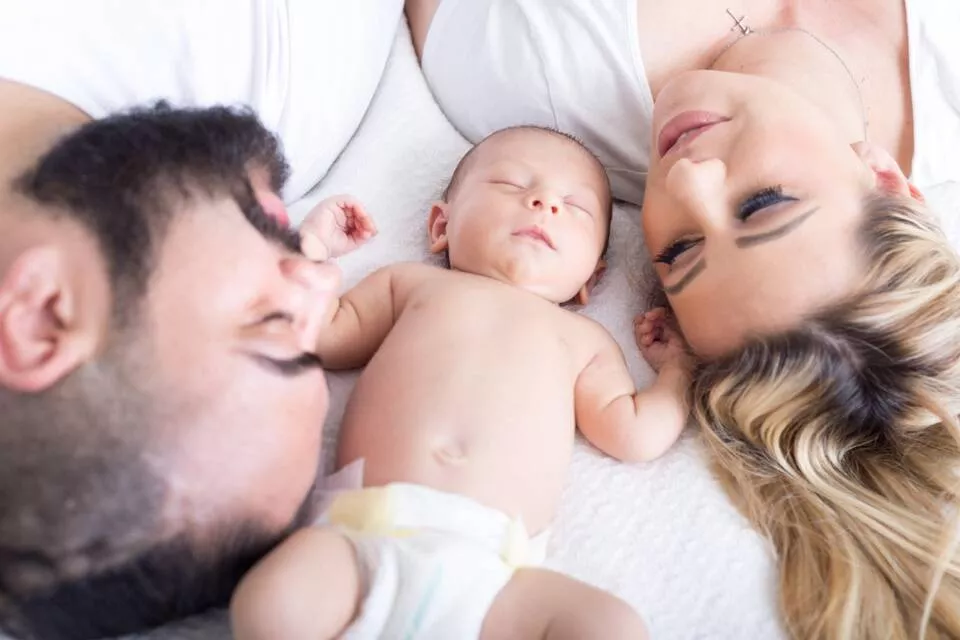Louise Gentle, Nottingham Trent University
What an interesting question!
A belly button or tummy button is technically known as a navel or umbilicus.
Humans have belly buttons because before we are born, we are connected to our mothers via an umbilical cord. This is a tube that delivers nourishment to the unborn baby, known as an embryo, and removes waste. It runs from the placenta Ė an organ in the mother that provides a source of food and oxygen Ė to the tummy of the embryo.
Once a baby is born, it can get nourishment such as milk through its mouth, and the umbilical cord is no longer needed. The umbilical cord shrivels up and drops off after a few weeks. So, a belly button is basically a scar from where the umbilical cord used to attach to the babyís tummy.
Humans are part of the group of animals called mammals, and other mammal babies develop inside their mother in the same way, getting nourishment from the placenta via an umbilical cord.
Belly buttons are quite large in humans, so they are pretty obvious. They are also visible in large mammals such as dolphins, orangutans and whales. Smaller mammals like cats, dogs and mice also have them, but the scars do not form large holes and they are often covered by hair or fur.
Other animal babies develop in different ways, though. Animals are actually separated into three groups, depending on how the embryos develop.
The first type is the one we have already talked about Ė when the embryo develops inside the mother and gets the food and oxygen it needs from the placenta.
The second type is animals that lay eggs. These animals, including reptiles, birds, amphibians and some mammals, donít have a placenta to provide food for their babies. So, do they have a belly button too?
Animals that lay eggs
Animals that develop in eggs, rather than in a womb, still need food. But, instead of getting this from the mother, the food is present in the egg in a special area known as the yolk sac. This is the yellow bit that you see in the middle of a fried egg. Donít worry, there are no babies in the eggs that you eat Ė they are unfertilised, meaning that they wouldnít ever develop into babies.
The embryos in fertilised eggs arenít able to drink the nutritious yolk through their mouths, in the same way that human embryos canít drink until they are born. Instead, the embryos inside the eggs are attached to the yolk sac by a smaller feeding tube called the yolk stalk that goes to the tummy of the embryo.
The yolk stalk is similar to the umbilical cord, and it also dries up once the baby hatches as it is no longer needed. So, yes, animals that come from eggs do have a belly button scar, but it is usually so tiny that you would have difficulty seeing it.
But what about reptiles like lizards or snakes? They donít have a placenta, like mammals, but they often donít lay eggs. They are in the third group of animals.
Ovoviviparous animals
For these animals, the embryo develops inside an egg, but the egg stays inside the mother. These animals are called ovoviviparous animals. Sometimes the mother lays the eggs just before the babies are born, which is what the duck-billed platypus, an Australian mammal, does. Often, the eggs hatch inside the mother, so she gives birth to live-born babies. This is how some sharks and rays are born.
Reptiles like snakes or lizards are often ovoviviparous. Although they are live-born, they have not been attached to their mother via an umbilical cord. Instead, they have received nourishment through the yolk sac, via the yolk stalk.
So, yes Ė all animals have a belly button. Even dinosaurs had belly buttons! Recently, a fossil of a relative of triceratops was found with a belly button scar very similar to the scars found on modern-day alligators.
The animals that have been attached to a mother through an umbilical cord, though, generally have a much larger belly button than those that have been attached to an egg yolk via an egg stalk.
Louise Gentle, Principal Lecturer in Wildlife Conservation, Nottingham Trent University
This article is republished from The Conversation under a Creative Commons license. Read the original article.
Stay updated with all the insights.
Navigate news, 1 email day.
Subscribe to Qrius

